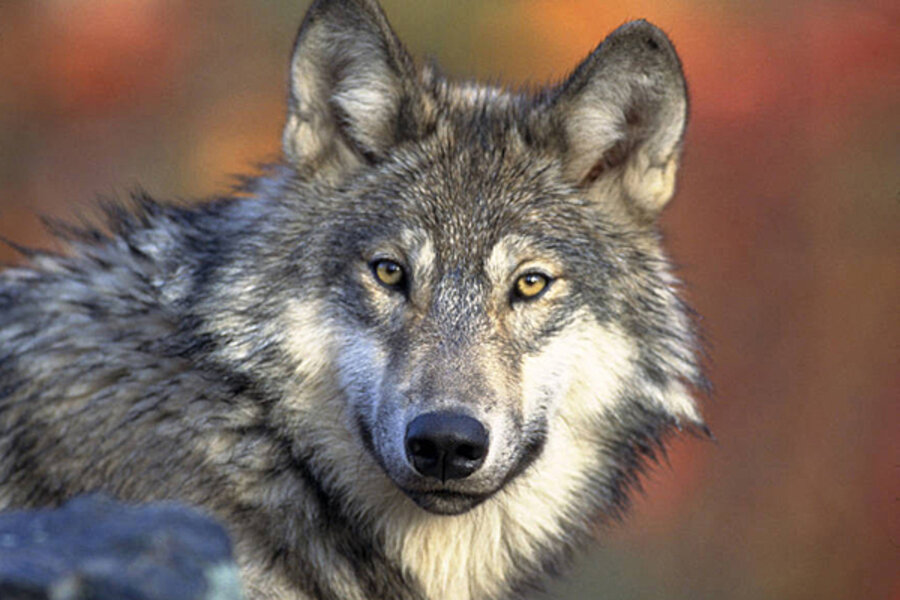California gray wolf decision delayed. Should it be protected?
Loading...
| FRESNO, Calif.
Advocates for the gray wolf in California will have to wait 90 days before learning if the animal will be listed as endangered, a state board decided Wednesday. Ranchers and state wildlife officials oppose granting the species legal protections.
The five members of the California Fish and Game Commission voted unanimously to delay a decision so they can gather more public comments on protecting the species, which is showing signs of a comeback after being killed off in the 1920s.
State wildlife officials say they don't support the listing because wolves haven't roamed in California for decades and there's no scientific basis to consider them endangered.
Wolves have been absent from California, so researchers have no way of measuring threats or the viability of the animal in the state, said Eric Loft, chief of wildlife programs for the Department of Fish and Wildlife.
Yet, the animal is iconic of the western landscape and California could easily become the home to functioning wolf packs within a decade, said Chuck Bonham, director of the wildlife agency.
He said he supports wolf conservation efforts but not listing it as endangered.
"You may hear we actually hate wolves," he said, maintaining that wasn't true. "We're committed to the long-term prospect of the wolf."
Advocates' renewed interest in protecting the species started in 2011, when a lone wolf from Oregon — called OR-7 — was tracked crossing into California. The decision to list it or not has been under review for the last year.
The commission gathered in Ventura and heard from more than 60 members of the public, most of them in support of wolves but others in opposition.
Kirk Wilbur of the California Cattlemen's Association, which is fighting wolf protections, said the state's endangered species act is designed to help species at risk of going extinct. The wolf is experiencing the reverse, he said.
"The species is not at risk of disappearing in the state of California," he said. "It is, rather, reappearing."
Mike Williams, a cattle rancher in Ventura County, said wolves cause high stress on cattle, increase illness and weight loss, and kill valuable livestock.
"Wolves are beautiful animals," he said. "But they're also vicious, brutal and efficient killing machines and a threat to people, livestock and pets."
The action in California stands in sharp contrast to the approach taken by other Western states that have successfully reintroduced the wolf to the point they are allowing hunts to reduce their numbers.
Nationally, wolves were near extinction not long ago. They were reintroduced with federal protections in the 1980s and '90s.
Wolves now occupy large parts of Montana, Idaho, Wyoming, Washington, Oregon and the Great Lakes.
Federal protections have ended in those two regions, and there is a pending proposal to lift protections across much of the remaining Lower 48 states.
Amaroq Weiss of the Center for Biological Diversity led the effort to protect California's wolves.
She accused state wildlife officials of violating state law by attempting to keep wolves off the California endangered species list.
"The wolf should be on the list," Weiss said. "And it should stay on the list."





